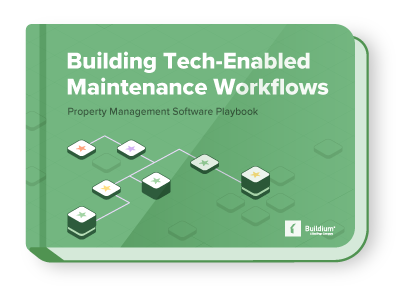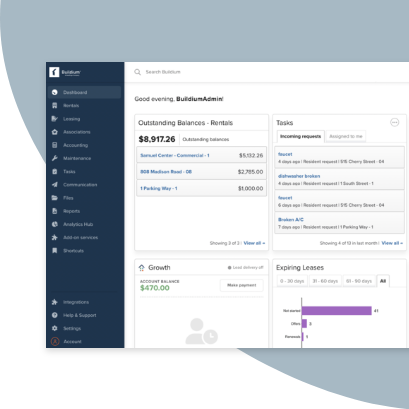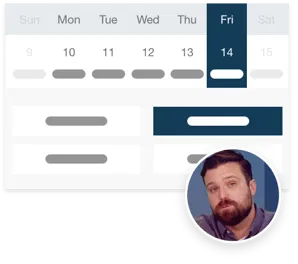Disclaimer: This blog post is meant for informational purposes only and does not constitute legal advice. Consult with a licensed attorney in Alabama for specific legal guidance.
Navigating the complexities of Alabama lease agreements demands a thorough understanding of their unique characteristics and components. These agreements serve as a foundational document in defining the relationship between owners and tenants, outlining the responsibilities and rights of each party.
They encompass a range of elements such as rent specifics, security deposit guidelines, property maintenance responsibilities, and terms of tenancy. These components play a significant role in managing expectations, laying out the intricacies of the parties involved and providing a clear framework for both owners and tenants to have a successful relationship.
For residential property managers in Alabama, understanding the intricacies of these agreements is not just beneficial but also necessary for effective management. The state’s specific laws and regulations regarding rental properties need tailored agreements that comply with local standards. This post will equip you with that knowledge.
What Is a Alabama Lease Agreement?
An Alabama lease agreement is the backbone of a rental relationship. This legally binding contract spells out the terms and conditions under which a rental property is leased. These agreements cover a variety of points—rent details, length of tenancy, security deposit specifications, and maintenance responsibilities, to name a few.
For property management companies help manage tenant expectations and responsibilities and act as a reference point in case of disputes. Think of them as a roadmap guiding the journey of a tenancy—they set the route, define the boundaries, and provide directions for what to do in case of bumps along the way.
Who Needs an Alabama Lease Agreement?
In Alabama, anyone involved in the residential rental market should understand the ins and outs of lease agreements. That includes property managers, owners, tenants, and other real estate professionals.
For property management companies, a lease agreement is the linchpin of a successful rental transaction and a hallmark of professionalism. It’s the document that outlines the specifics of the rental arrangement, providing a clear set of guidelines for how you operate and interact with tenants.
They serve as a reference for managing multiple properties and maintaining consistency in operations. By standardizing the rental process, property managers can operate more efficiently, manage tenant relations better, and address issues more effectively.
For owners, a lease agreement offers a layer of security. It sets the terms for rent, property maintenance, and use of the premises, reducing the likelihood of misunderstandings and conflicts.
For tenants, this agreement is equally beneficial. It gives them a clear understanding of their rights, such as their living conditions, the rent amount, and duration of their tenancy. This clarity fosters a more transparent and trustworthy relationship between tenant and owner.
Finally, other real estate professionals across the industry find lease agreements helpful because they provide a standardized framework for advising clients and ensuring compliance with state-specific legal requirements.
Types of Alabama Lease Agreements
Alabama’s residential property landscape offers a variety of lease agreements to fit different needs and situations. As a property manager, it’s important to be familiar with each type to effectively cater to your clients.
1. Fixed-Term Lease Agreement: First up, the fixed-term lease agreement is the go-to for many. It locks in terms and conditions for a predetermined period, usually a year. This type of lease provides stability for both tenants and owners—tenants have a guaranteed home for the lease term, and owners have a steady income stream. The trade-off is less flexibility; breaking this lease usually comes with penalties.
2. Month-to-Month Lease Agreement: The month-to-month lease agreement is ideal for tenants who aren’t keen on long-term commitments, or for owners who might be considering selling or renovating the property. This agreement renews automatically every month, but either party can terminate it with proper notice, typically 30 days in Alabama.
3. Sublease Agreement: A sublease agreement allows the original tenant to rent out the space to someone else, subject to the owner’s approval. This can be a great option for tenants who need to move before their lease is up, but it does add an extra layer of complexity in terms of managing the property.
4. Roommate Agreement: Roommate agreements are handy when multiple people are sharing a rental. While not a formal lease with the owner, this agreement sets out rules and expectations among roommates, covering things like rent division, chores, and noise levels. It’s an excellent tool for preventing squabbles and supporting a peaceful co-living situation.
5. Commercial Lease Agreement: While similar in structure to residential leases, commercial lease agreements are designed for business properties. They tend to be more complex, with terms regarding renovations, signage, and commercial activities.
Each type of lease serves a distinct purpose in Alabama’s rental market. Understanding these differences allows property managers to offer tailored solutions to their clients, facilitating both legal compliance and satisfied owners and tenants.
What Should an Alabama Lease Agreement Include?
Here’s a breakdown of the essentials for an Alabama lease agreement:
Parties Involved
This section establishes who is legally bound by the terms of the agreement. Every Alabama lease agreement must identify the parties involved—that means the owner or property management company and the tenant(s). Full legal names should be used to avoid any confusion.
Lease Duration Dates
It’s important to specify the start and end date of the lease. This could be for a fixed term, such as a year, which is common in standard residential leases, or it could be a month-to-month arrangement. Clear dates set the expectations for the lease’s longevity and guide the renewal or termination process.
Rent and Security Deposit Information
This section should detail the rent amount, due dates, and acceptable payment methods. It’s also important to include information about the security deposit—how much it is, when it will be returned, and under what conditions it will be returned. Alabama law caps security deposits at one month’s rent, except in the case of pets on the premises, changes to the property, or increased liability, and it requires the return of deposits within 60 days after a tenant moves out.
Occupancy Limits
Define who can live on the property by setting occupancy limits. This includes naming the tenants and outlining policies for guests. This helps in maintaining a safe living environment and accountability for tenants.
Property Management Company & Tenant Responsibilities
Clearly outlining the responsibilities of both the property management company and the tenant is fundamental. This includes who takes care of maintenance and repairs, how and when the property can be inspected, and rules regarding alterations or improvements by the tenant.
Pet Policies
If pets are allowed, specify the types and sizes of pets permitted, along with any restrictions or additional fees or deposits required. This helps in preventing misunderstandings and potential damage to the property.
In addition to these key elements, it’s also wise to include clauses about late fees, insurance requirements, rules regarding illegal activities, and termination procedures. Remember, while a lease agreement should comply with Alabama state laws, it should also be tailored to the specific property and the management style of the company.
Alabama Lease Agreement Addenda and Disclosures
Navigating Alabama’s lease agreement addenda and disclosures can be a detailed process, but it’s a necessary part of residential property management. Keeping abreast of these requirements not only complies with the law but also sets a professional standard in your property management practices.
Below are some of the addenda and disclosures that should be part of an Alabama lease agreement. This list is not exhaustive, so consult a legal professional if you’re unsure about what to include in your own agreements.
Lead-Based Paint Disclosure
For residential properties built before 1978, federal law requires the inclusion of a lead-based paint disclosure. This must inform tenants about the potential presence of lead-based paint and its hazards. It’s not just a formality; it’s about ensuring the safety of the occupants, especially in older properties.
Owner/Manager Identification
This disclosure is about transparency. The lease must identify the property owner or the management company, along with contact information. This ensures tenants know who to contact for repairs, maintenance, or in case of emergencies.
Optional Disclosures & Addenda
Beyond mandatory disclosures, there are optional ones that can be beneficial. These might include policies on smoking, pet ownership, or use of common areas. Including such addenda can prevent future disputes and clarify rules that are specific to your property.
Consequences for Not Including Mandatory Disclosures
Failing to include mandatory disclosures can lead to legal headaches. If an owner doesn’t provide the required lead-based paint disclosure, for example, they may face penalties, including fines. Not adhering to state-required disclosures could result in disputes being resolved in favor of the tenant, and in some cases, could even lead to lawsuits.
Alabama Lease Agreement Laws and Regulations
Alabama’s lease agreement laws and regulations, as specified in Alabama Code Title 35, encompass a range of statutes that are particularly important for residential property managers to understand. These laws detail the legal framework for rental agreements within the state and include:
Security Deposits
Security deposits can be no more than one month’s rent in the state of Alabama (this does not include pet deposits or other supplemental deposits). Owners are not required to pay interest on security deposits upon their return, which must be done within 60 days of the tenant moving out.
Right of Entry
Alabama owners are required by law to give two days’ notice before entering a property and can enter only at reasonable times. This notice does not have to be in writing. Be sure to state the specific time and purpose of entry in the notice you provide.
Grace Period, Late Fees, and Eviction
Alabama does not include a mandatory grace period for paying rent before charging late fees. Owners must provide a written notice to tenants to pay rent or vacate the property then must wait seven days before beginning the eviction process.
Unique Alabama Lease Agreement Laws
The above laws cover most of what you’ll need to look out for when writing your agreement, but be sure to review up-to-date legal information for the most accurate picture of what to include. For a comprehensive understanding of these statutes, it is important to consult Alabama Code Title 35 directly.
Taking the Next Steps with Your Alabama Lease Agreement
Alabama lease agreements can be tricky to fully understand and implement, but this guide can give you what you need to get started. To start creating your lease agreements even faster, consider downloading our free sample template using the “Download Sample Template” button above and explore the full range of leasing tools that Buildium has to offer.


